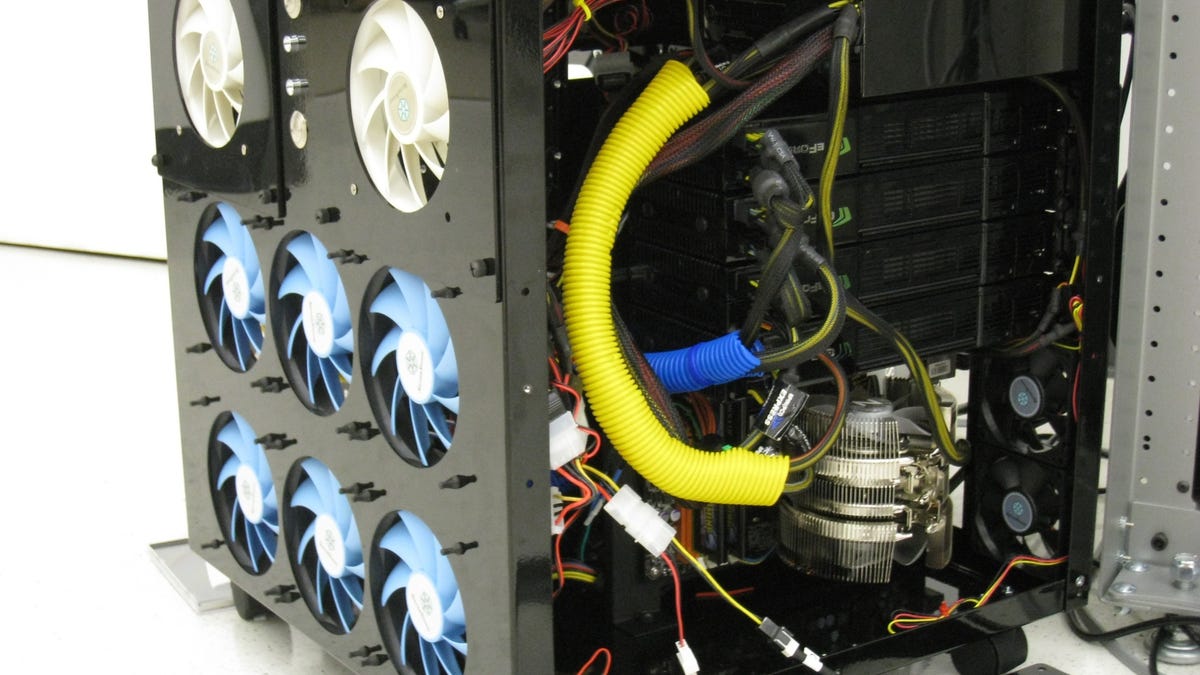Researchers hope to build autonomous 'Batmobile'
Scientists hope to build computers capable of mimicking the brain's visual cortex and, in the process, build cars that can perceive and navigate around road hazards.

If you think the Batmobile is just something from the movies or comic books, researchers at MIT and Harvard University want to change your mind.
As part of a long-term project, the researchers are working on developing a computer that they hope could one day mimic the visualization systems of the human brain. And while there could be many practical applications for such research, one of the sexiest is a potential autonomous vehicle that could use its visualization acumen to navigate roadside dangers or impassable terrain.
According to Nicolas Pinto, a Ph.D. student specializing in brain visualization research at MIT, the idea behind the project is to learn how to build a computer using advanced graphics processing units (GPUs) that could some day simulate the functions of the brain's visual cortex.
Pinto, who is partnered on the project with David Cox at Harvard's Rowland Institute, explained that research indicates the brain has computing power of at least 20 petaflops, or roughly 20 times the world's most powerful supercomputer. And he added that scientists figure that the visual cortex makes up at least 40 percent of the brain, meaning that by itself, it has nearly 10 petaflops of computing power.
The brain is massively parallel and its power comes from its ability to perform massively parallel computations, said Pinto, whose supervisor at MIT is James DiCarlo. As a research team, then, he explained that one of the biggest problems he and Cox face in trying to mimic the brain's power is simulating that parallelism.
The best solution, he said, seems to be implementing a significant number of GPUs and applying software tricks to them. And at the moment, Pinto said, the best technology he and his partner have found for the job is state-of-the-art GPUs from Nvidia.
In part, he added, that's because, as unfunded university researchers, he and Cox are running their experiments on Linux computers, and Nvidia's GPUs are the best option for that operating system. Plus, he said, Nvidia is offering the research team a powerful software stack that helps with coding the GPUs.
In general, then, Pinto and Cox are working--with no specific time frame--on enabling their computers to be visually aware technology that, if successful, could make it possible for an autonomous vehicle to do things like recognize an object as a pedestrian and understand what a person is doing.
"My long-term dream is to build a cheap, autonomous, and intelligent robot-car--like a Batmobile--that, if successful, could greatly improve security and health (death rates from road accidents are alarming)," said Pinto, "minimize energy use--by enhancing transport efficiently and facilitating the integration of renewable energies--reduce productive time wasted [in commuting], and optimize urban space for people, not machines...If we can design a machine that sees like humans do, we may not be far from building one that drives as well, allowing for a gradual adoption using the current infrastructure."
To be sure, Pinto and Cox are not expecting to produce their Batmobile any time soon. Conservatively, he suggested that it could be at least five years and possibly as many as 10 before such technology is ready for prime time.
And there's no doubt, of course, that this isn't the only research effort that is attempting to build computers that can simulate the human brain. One notable project is an ongoing program at IBM in which the technology giant and five university partners were awarded a DARPA grant to try to achieve that goal. Already, that team has managed to mimic the brain power of felines, and said last November that they hope to simulate the human brain by about 2019.
'We don't know much about the brain'
To Pinto, one of the biggest hurdles that must be overcome in order to reach the Batmobile vision--or steps on the path towards that--is that researchers still don't know much about the brain. The constraints of understanding neural data mean that trying to build a computer that is like the brain requires, to some extent, simulating evolution. And that means that making progress in the research is slow, laborious and, likely, linear.
Still, Pinto and Cox are already making progress in developing algorithms for computer simulation of vision and they are also helped out by fortuitous developments in carmakers' steady addition of sensor systems to their vehicles. They are already imaging platforms, Pinto said of today's most cutting-edge cars. Now, it will be necessary to add intelligence to the vehicles if we want them to be visually aware.
On June 24, Geek Gestalt will kick off Road Trip 2010. After driving more than 18,000 miles in the Rocky Mountains, the Pacific Northwest, the Southwest and the Southeast over the last four summers, I'll be looking for the best in technology, science, military, nature, aviation and more throughout the American Northeast. If you have a suggestion for someplace to visit, drop me a line. In the meantime, you can follow my preparations for the project on Twitter @GreeterDan and @RoadTrip.

